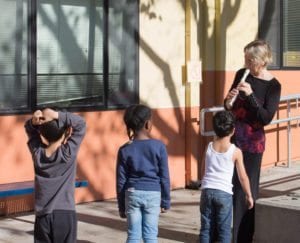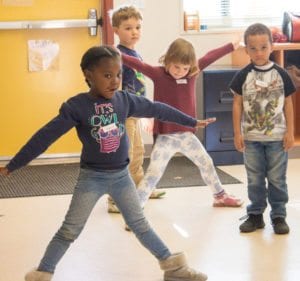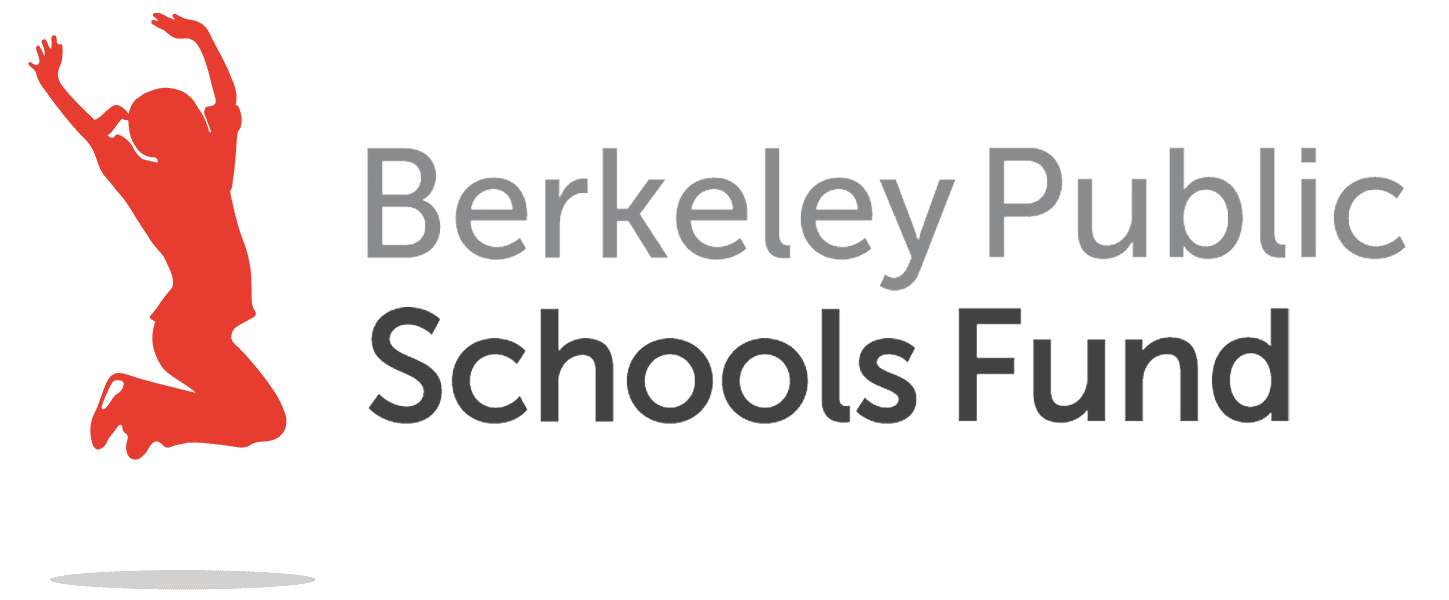
Before the winter break, we visited another Strategic Impact Grant “in action”, this time at the King Child Development Center (CDC) where transitional kindergarteners are taking a weekly dance class through the “Transitional Kindergarten Dance Collaborative” grant. Prior to the class starting, the children were eager to dance and move their bodies, their faces glowing with excitement.
The dance teacher, Greacian Goeke, guided them through various exercises starting with playing different notes on a flute for the students to translate into movement and then contracting their bodies into a ball and then expanding as big as the sun. Inspired by each other’s “movement ideas”, they walked sideways like a crab as modeled by one classmate and wound their bodies up like a pretzel as shown by another classmate. Ms. Goeke led them through rhythm exercises with her drum, counting, “Uno, dos, tres!” and the children would make three different poses to the beat.
 It was clearly fun for the children, but there was a deeper meaning behind the movements that they are learning. As Ms. Goeke explains, “Dance is an extremely useful pre-literacy activity as they’re learning how to make straight and curved shapes with their bodies that can later be applied to writing and reading the alphabet.” The students are learning to think 3-dimensionally about the space that their bodies and movements inhabit, also known as “spatial awareness”, which lends itself wonderfully to conceptual thinking for little builders and engineers with their wood blocks and legos. The students are also learning about negative and positive space as Ms. Goeke instructs them to envelope themselves in an imaginary safety “bubble” which shouldn’t collide with other people’s bubbles. As the principal of King CDC, Isabelle McDaniel, explains, “Because kinesthetic learning is a vital component in early education classrooms, we anticipate seeing benefits beyond gross motor development and body awareness. Students will also have the opportunity to develop social skills and executive functions (self-regulation, entrance, focus, etc). “
It was clearly fun for the children, but there was a deeper meaning behind the movements that they are learning. As Ms. Goeke explains, “Dance is an extremely useful pre-literacy activity as they’re learning how to make straight and curved shapes with their bodies that can later be applied to writing and reading the alphabet.” The students are learning to think 3-dimensionally about the space that their bodies and movements inhabit, also known as “spatial awareness”, which lends itself wonderfully to conceptual thinking for little builders and engineers with their wood blocks and legos. The students are also learning about negative and positive space as Ms. Goeke instructs them to envelope themselves in an imaginary safety “bubble” which shouldn’t collide with other people’s bubbles. As the principal of King CDC, Isabelle McDaniel, explains, “Because kinesthetic learning is a vital component in early education classrooms, we anticipate seeing benefits beyond gross motor development and body awareness. Students will also have the opportunity to develop social skills and executive functions (self-regulation, entrance, focus, etc). “
For Ms. Goeke, the most rewarding part of teaching dance is witnessing students use their bodies as an instrument of expression. She found that all students have their own signature movement style and she loves teaching them techniques and tools to further express themselves. She views “learning how to inhabit one’s body as the most humanizing activity”.

The Dance Collaborative is taught every week to all of the Transitional Kindergarteners at King CDC and also involves weekly meetings between the dance teachers and TK teachers to co-plan a curriculum that integrates movement into everyday classroom activities. The goal is to have the TK teachers become more comfortable with dance instruction as the dance teacher observes them and provides coaching and feedback. Ultimately, it is collaborative model of dance instruction and professional development that seeks to build the capacity of the general education teachers.
This is exactly the type of long-term, far-reaching effect we strive for our Strategic Impact Grants to have; empowering early education teachers to teach essential skills like coordination and connection to one’s body, and empowering young students with a life-long gift of appreciation for music and movement.

